9 Foods That May Help Reduce Cellulite
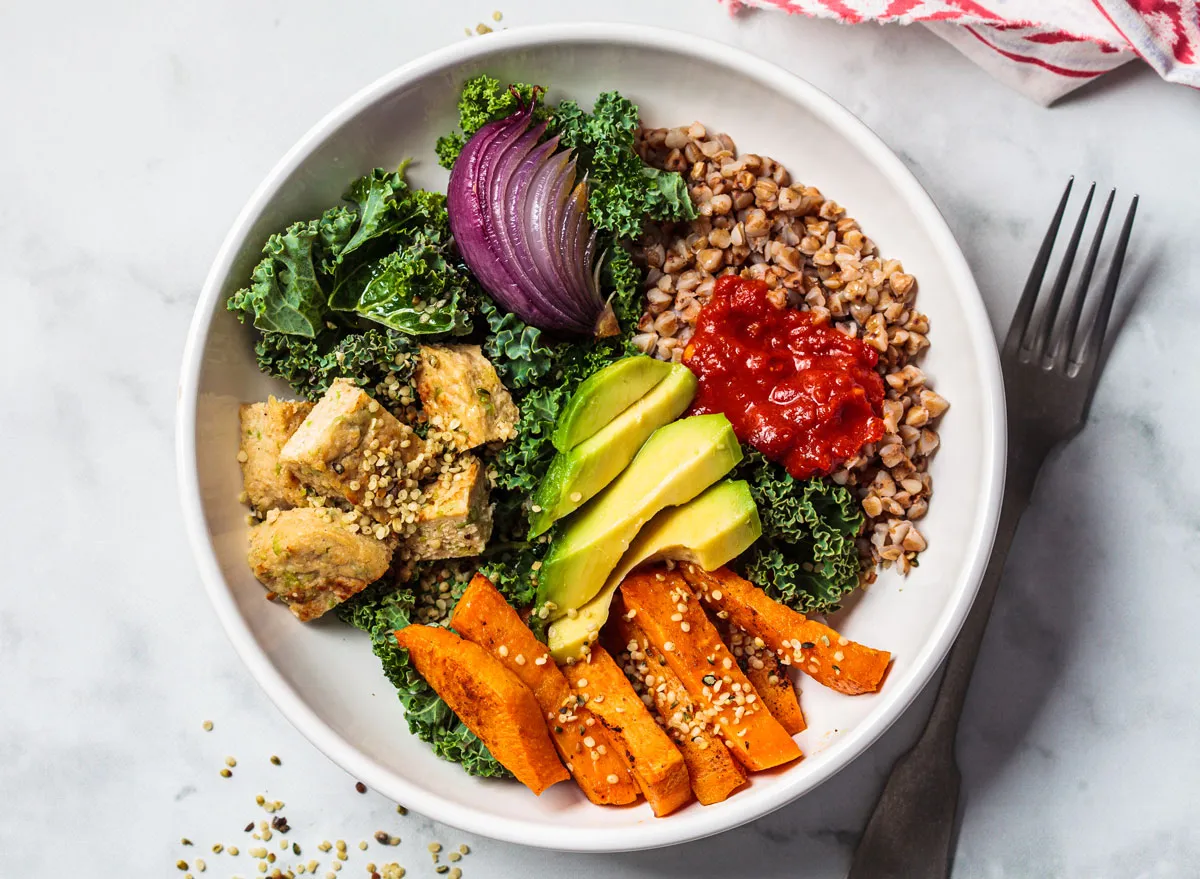
Cellulite. Even the word is cringy. And if you fall into the 73.6% of American adults who are overweight (a body mass index or BMI of 25 or above) or are clinically diagnosed with obesity (defined as a BMI of 30 or above), you may have this dimpling and unwanted body fat in places you wish you didn’t, like the hips, thighs, and/or buttocks. These pesky pockets of fat seem to highlight the presence of extra pounds that tend to stick around.
Everyone has fat, or “adipose tissue”, which makes up roughly 10-25% of our total body weight. The total amount of adipose tissue in the body naturally varies depending on sex, age, genetics, and other factors. Cellulite, on the other hand, isn’t actually fat; it is the normal physiological response to the storage of fat that occurs when collagen fibers that connect fat to the skin stretch, break down, or pull, thereby allowing fat cells or “adipocytes” to bulge out.
Today’s market is full of supplements, lotions, and other skin applications that claim to reduce or treat cellulite but come with minimal evidence for their effectiveness. These products could temporarily tighten the outermost layer of the skin but do little to address the underlying issue. Instead, a focus on healthy behaviors like weight management, healthy eating, hydration, and adequate physical activity (AKA the classics!) seems to provide more support in controlling the presence of cellulite for the long haul.
A winning strategy for minimizing cellulite is to determine what ways you can lose body fat and increase muscle mass. Extra weight can make cellulite more visible. This likely means a focus on creating a calorie deficit where it makes sense in your lifestyle, such as controlled portions, less added oils, or reduced added sugars in your diet. It could also translate to amping up your exercise routine to include an extra day of cardiovascular activity or resistance training.
Here we rounded up a list of foods that are being investigated for their role in possibly reducing cellulite. Read on, and for more, don’t miss The 30 Healthiest Foods to Eat Every Day.
Blueberries
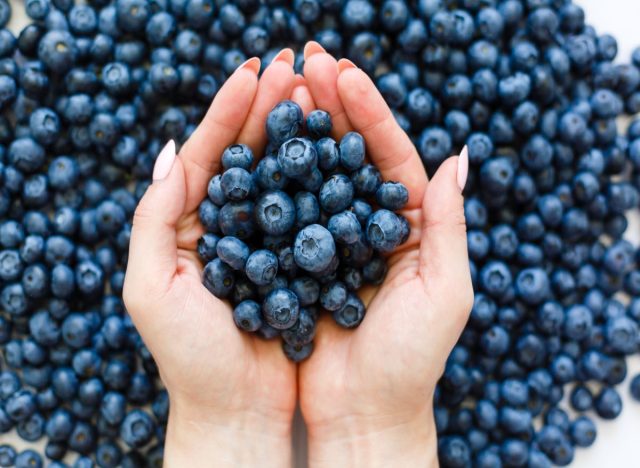
There is no shortage of support that eating your fruits, including blueberries, and vegetables is associated with lower body weight. This critical review from the European Journal of Nutrition also draws a convincing connection between fruit and vegetable consumption and reduced risk of chronic diseases like high blood pressure.
Lentils
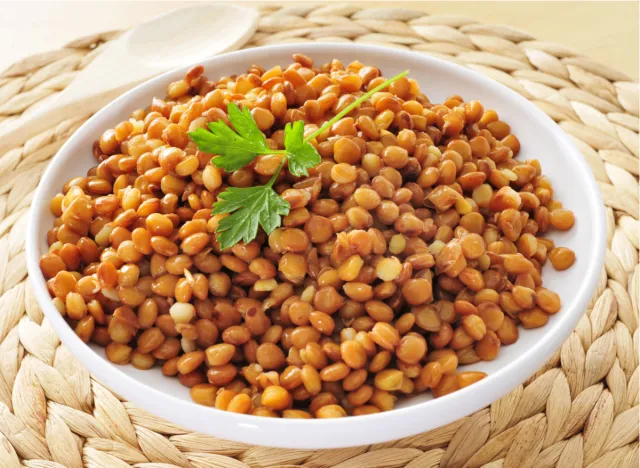
Lentils and other “pulses” (edible seeds of legumes) like black beans, chickpeas, or pinto beans, are excellent sources of fiber. They also have been found to create a modest weight loss for people who consume them regularly, which was explored in this systematic review in the American Journal of Clinical Nutrition.
Pears
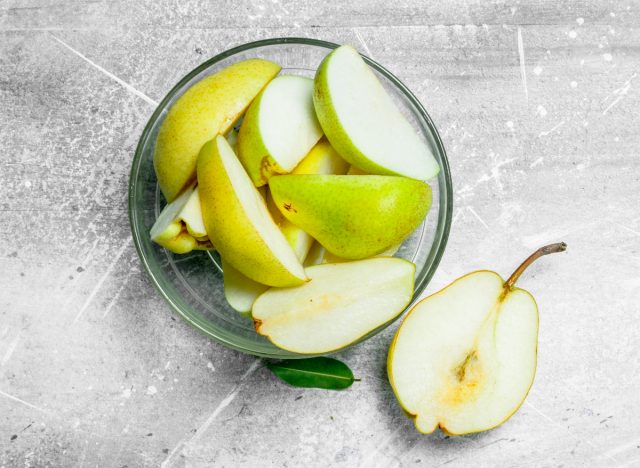
Pears are one of the most fibrous fruits at the supermarket. Coming in at around 6 grams of fiber per medium fruit, you’ll likely feel satisfied on less if this food makes it into snack time or meal time, thereby offsetting larger portions elsewhere. Consider chopping up for a salad, dipping in peanut butter, or stirring into your next oatmeal.
Kale
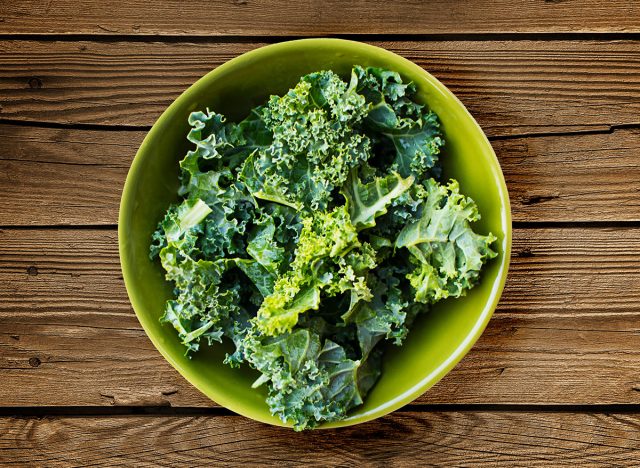
Regular consumers of non-starchy dark leafy greens like kale, as well as deep orange or yellow vegetables, were found in a 2014 cross-sectional study in the Journal of the Academy of Nutrition and Dietetics to have lower visceral fat than non-consumers.
Avocados
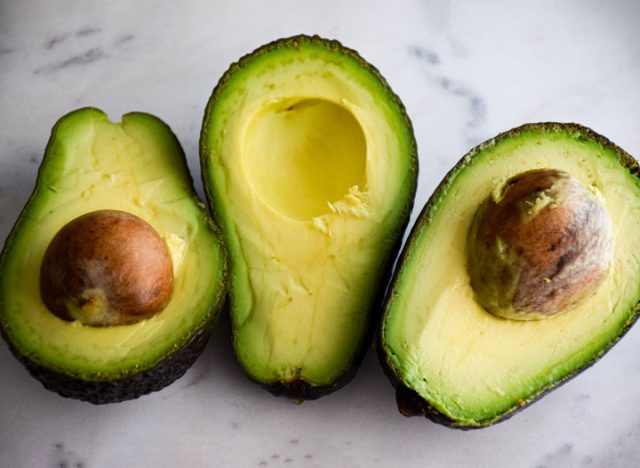
Although avocados are more calorie-dense than most other pieces of produce, they may help stimulate weight loss. Women who regularly consume fruits and vegetables, including avocados, saw a higher weight loss over a four-year period than those who did not eat these foods, according to this publication in the journal Nutrients.
Mushrooms
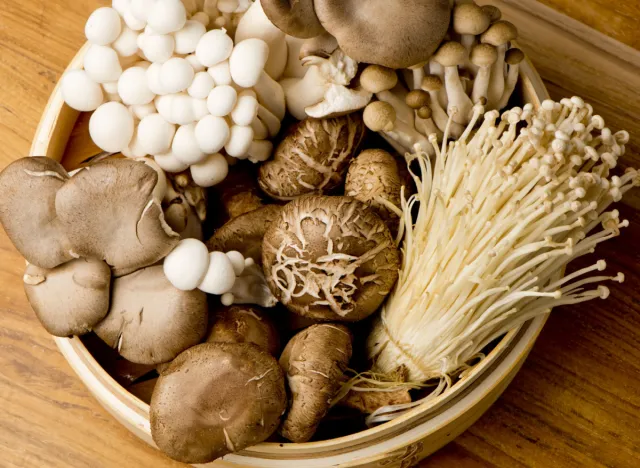
Mushrooms are the meat of the plant kingdom. Inducing a rich and savory flavor wherever they are found, mushrooms are winding up in meat dishes where they are blended with chicken or beef to extend both flavor and nutrition. This is a simple hack to reduce the calories of your next burger patty or Bolognese sauce while falling within desired calorie limits.
Water
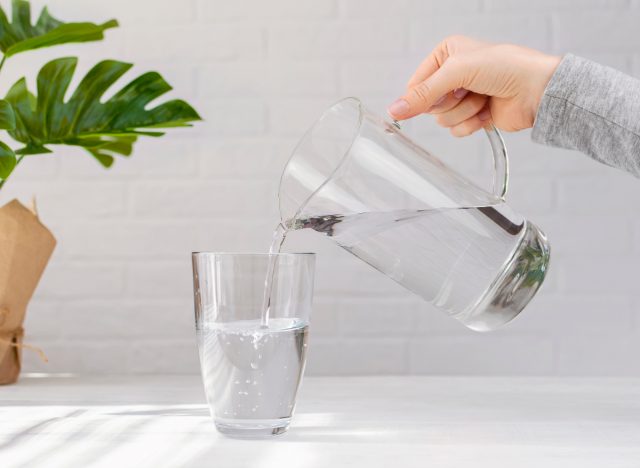
Although it’s a beverage, not a food, water—or any low-calorie version of it like seltzers, enhanced water beverages, or fruit-infused waters—not only helps you maintain hydration but drinking it also helps you avoid cellulite. Aim to drink 11.5 cups of total water every day for women and 15.5 cups per day for men.
Bananas
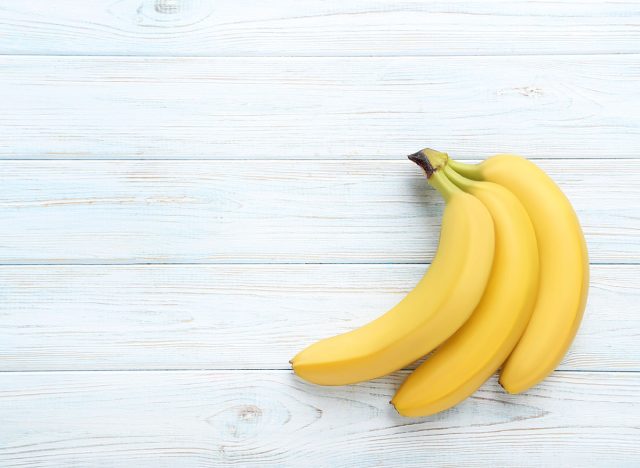
Bananas are commonly recognized as a source of potassium, a mineral that is associated with the control of swelling as it has an inverse relationship with sodium. Fluid retention from high intakes of salt in the diet can lead to swelling which can increase the appearance of cellulite.
Sweet potatoes
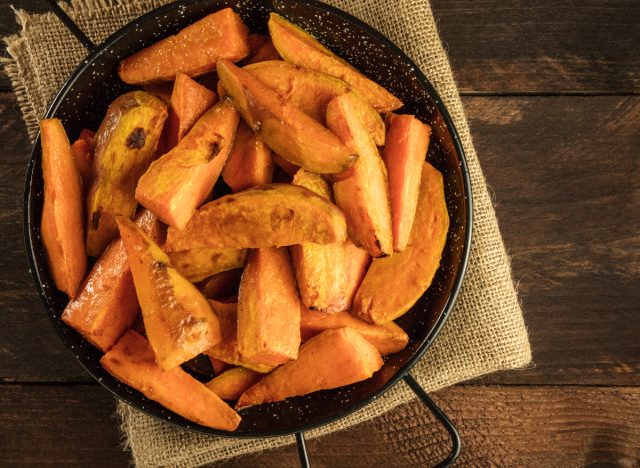
If you are looking for a starchy vegetable, sweet potatoes are a stellar choice, providing some of the most robust health benefits, including excellent vitamin A content. They are also high in potassium, which can reduce the visibility of cellulite associated with excess sodium intake.
- Source: https://www.cdc.gov/nchs/fastats/obesity-overweight.htm
- Source: https://www.acsm.org/docs/default-source/publications-files/getp10_tables-4-4-4-5-updated.pdf
- Source: https://medlineplus.gov/ency/article/002033.htm
- Source: https://pubmed.ncbi.nlm.nih.gov/22684631/
- Source: https://pubmed.ncbi.nlm.nih.gov/27030531/
- Source: https://pubmed.ncbi.nlm.nih.gov/24685236/
- Source: https://www.ncbi.nlm.nih.gov/pmc/articles/PMC7399879/
- Source: https://nap.nationalacademies.org/read/10925/chapter/6
- Source: https://www.heart.org/en/healthy-living/healthy-eating/eat-smart/sodium/potassium